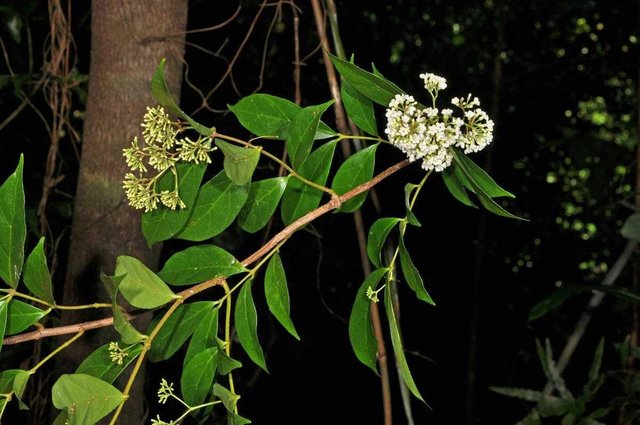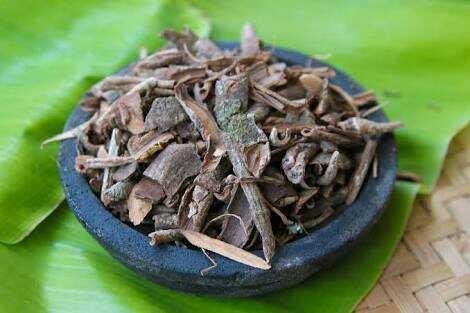wood and roots of Parameria laevigata
This plant grows wild in many forests and other places that are barren land and get enough sunlight. The bush creeps, about 4 meters long. Growing wild in the forest in lowlands up to 1200 dpl, stems: twisted, round, woody, hairy, brown. , Leaves: single, lanceolate, opposite, base and tapered leaves, young leaves are reddish green after dark green, opposite, pinnate incubation, 5-12 cm long, 2-5 cm wide, 2-4 cm long stem. Flowers: shape panicle, compound, crown funnel shape, length 2-2,5 cm, white color. Flowering in juni-october. Fruit: pod, length 15-45 cm, tip lanciip, contains 4-10 seeds, fruitful October october december. Seed: round, blackish brown. Roots riding, brown. As a creeping shrub, wooden meeting or wood rapet well maintained as an ornamental plant.
Leather, wood and roots Parameria laevigata contains flavonoids and polyphenols, the leaves also contain saponins and tannins. Saponin is a surfactant compound and various research results are concluded, saponins are hypocholesterolemic, immunostimulatory, and anticarcinogenic. Saponin anticoarsinigenic mechanisms include direct antioxidant and cytotoxic effects in cancer cells. Saponins provide a bitter taste in vegetable foods. The main source of saponins is especially soybeans. Saponins can inhibit the growth of colon cancer and help cholesterol levels become normal. Depending on the type of food consumed, a day can consume saponins of 10-200 mg. Tanin is an astringent intestinal tract, can reduce the secretion of fluid in the intestine, so that the water content in human feces is reduced so as to prevent diarrhea. Polyphenols are a group of chemicals found in plants.

This substance has a distinctive mark that has many phenol groups in its molecule. Polyphenols play a role in coloring a plant such as leaf color during autumn. In some studies mentioned that the polyphenol group has a role as a good antioxidant for health. Polyphenol antioxidants can reduce the risk of heart disease and blood vessels and cancer. There are studies that conclude polyphenols can reduce the risk of Alzheimer's disease. Serves as an antihistamine (allergy). Flavonoids, functioning: blood circulation throughout the body and prevent the occurrence of blockage in the blood vessels; reduce cholesterol content and reduce fat accumulation in blood vessel walls; reduce the risk of coronary heart disease; contains anti-inflammatory (anti-inflammatory); serves as an anti-oxidant; helps reduce pain in case of bleeding or swelling.

Benefits Parameria skin bark is efficacious as a cure for uterine pain after childbirth, dysentery, ulceration and injuries. For uterine pain cures after delivery use 15 grams of Parameria laevigata bark, washed, boiled with 3 cups water for 25 minutes, after lifted filtered. The filter was drunk twice as much in the morning and afternoon. Also efficacious as Stomakik; Antipyretics; Disinfectant.